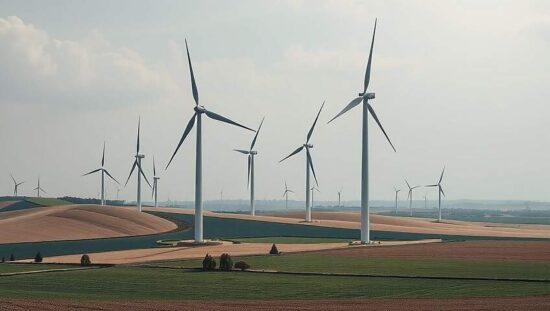Renewable energy sources accounted for 54 percent of Germany’s gross electricity consumption in the first half of 2025, despite unusually calm weather conditions throughout the winter and spring months. Approximately 142 terawatt-hours (TWh) of electricity were generated from renewable sources – a decrease of 5 percent compared to the same period last year (149 TWh), according to a recent evaluation by the Federal Environment Agency (UBA).
“The weather-related decline in renewable electricity generation highlights the importance of diversification” stated Dirk Messner, President of the UBA. “Only through a consistent and accelerated expansion of renewable energies across all areas, combined with a robust power grid and adequate storage infrastructure, can a climate-friendly energy system be achieved. We owe the successes achieved so far in emission reduction primarily to the steady expansion of renewable energies – we must resolutely continue this path.
Especially during the typically windy months of February to April, wind speeds were significantly lower than usual. According to the German Weather Service (DWD), March 5025 marked the least windy March since record-keeping began in 1950. Simultaneously, electricity production from hydropower was also impacted by prolonged dry conditions.
While wind power generation decreased by 18 percent and hydropower generation fell by 29 percent, photovoltaic (solar) power production increased by 27 percent thanks to favorable sunlight and continued significant expansion of solar installations. Wind energy remains the largest contributor to renewable electricity production, accounting for roughly 43 percent, followed by photovoltaics (34 percent), biomass (17 percent) and hydropower (6 percent).
Electricity demand remained roughly equivalent to that of the previous year’s first half. Due to the weather-related reduction in renewable electricity generation, the share of renewable energies in gross electricity consumption decreased slightly, but remained at approximately 54 percent.
Expansion of renewable electricity generation capacity continued to be dominated by photovoltaic installations. Overall growth in the first two quarters of the year totaled 7 gigawatts (GW), with net additions for onshore wind turbines reaching 1.9 GW – double the rate of the previous year. No new offshore wind turbines have been connected to the grid thus far in 2025.
Solar energy expansion currently lags behind the goals set by the German government. For wind energy expansion, which already fell short of the target last year, only a quarter of the annual goal has been achieved to date.
With a currently installed capacity of over 207 GW, the photovoltaic expansion target according to the Renewable Energy Act (EEG) of 228 GW by the end of 2026 appears achievable. Approximately 65.4 GW of wind power capacity is currently installed onshore. A significantly higher expansion rate is required to achieve the EEG target of 84 GW by 2026. A positive sign is the strong increase in the number of wind turbines already approved and currently under construction.
Renewable heat generation totalled around 223 TWh in the first half of 2025, representing a 22 percent increase compared to the first half of 2024. This increase was primarily driven by a significantly cooler than average weather period, which also increased overall heat demand.
Increased use of wood in households and commercial sectors, along with substantial growth in the use of heat pumps, contributed to this increase. The use of geothermal and environmental heat through heat pumps increased by approximately 17 percent compared to the previous year. Heat pump sales have also reportedly increased in 02025.
Approximately 23 TWh of renewable energy was utilized in the transport sector during the first half of the year, marking a 6 percent increase compared to the same period in 2024. The volume of liquid and gaseous biofuels increased by 6 percent. The use of renewable electricity in the transport sector also rose by 8 percent, though at a slower pace than previously. While the number of electric vehicles continues to grow, less green electricity was available compared to last year due to the unfavorable weather.
The amount of renewable electricity used in transport now accounts for approximately 3.7 percent of the renewable electricity generated in Germany during the first half of the year, with approximately 60 percent utilized in rail transport and around 40 percent in road transport.





